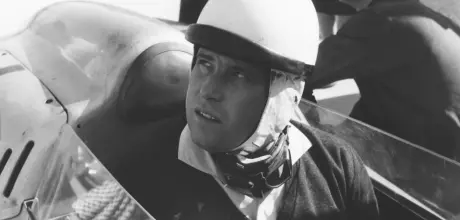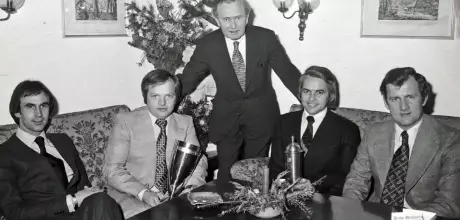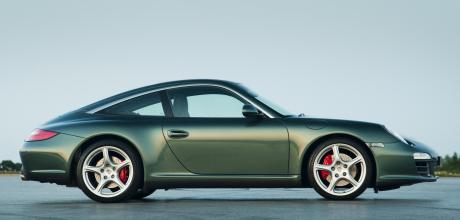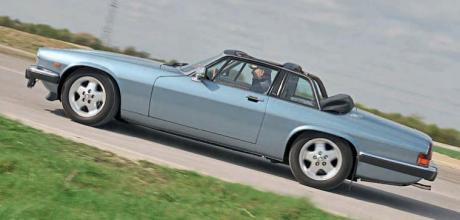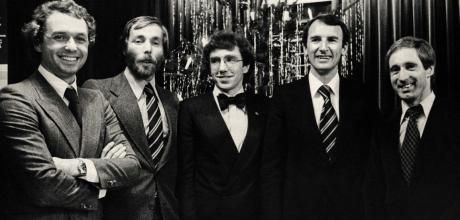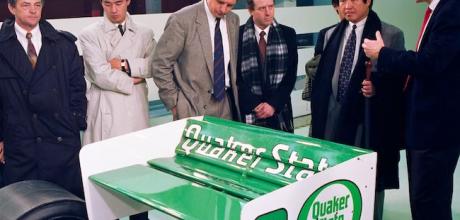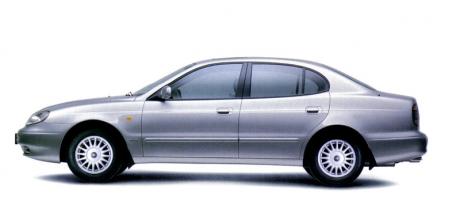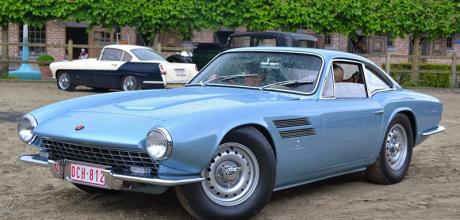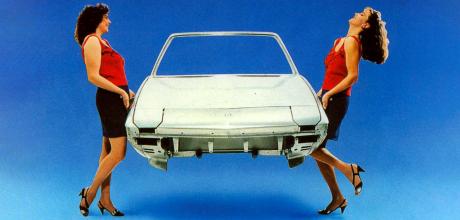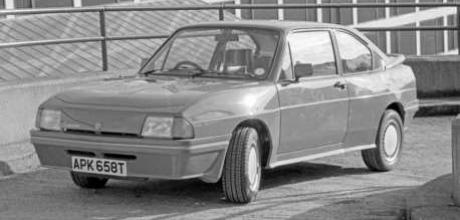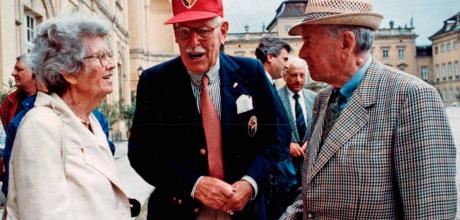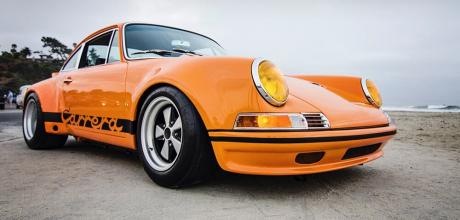History of the cars
The Porsche community is mourning the loss of former racing driver and Operations Manager of the Weissach Development Centre, Herbert Linge, who died on 5th January aged ninety-five. Linge played an instrumental role in establishing Porsche’s proving ground and, through his work with motorsport’s governing body, was responsible for the introduction of life-saving measures at race tracks all over the world.
Porsche 911 Classic → Ferry Porsche prior to the 1973 ceremony are three seasoned exponents of the company and, on the left
The annual awards ceremony is a timehonoured ritual at Porsche and a reminder that the company really did make its name through motorsport. Usually held in the third week of December, these days the ceremony is slightly overshadowed by competition from other Porsche evening functions, such as Sound Night and other social media-inspired events. However, 50 years ago when Porsche was still a small company and almost all Porsche racers knew each other, it was the event of the year.
Porsche 911 997 → Porsche’s ace test specialist Walter Röhrl (right), but board member for R&D, Wolfgang Hatz
With its combination of electric and petrol V8 traction, the 887hp 918 hypercar was the most powerful Porsche yet. It also had the longest introduction of any Porsche, because the company was determined to get this complex car right first time. A measure of this concern is visible in the photograph.
The 997 Targa. Chances are you forgot about that one, and indeed the 996 before it. Porsche took a bit of a diversion with the Targa version of the 993, 996 and 997, with these models not coming with the immediate Targa signifier of a rollover bar and expansive wraparound rear glass. The 991 would return to that format, with some added opening and closing automated theatrics, all of which leaves those interim Targa models somewhat overlooked.
Due to such luminaries as the XK120, E-Type and XJ6 as well as the five Le Mans victories, it’s understandable why many consider the 1950s and 1960s to be Jaguar’s golden era. Yet in my view the company’s best decade is a completely different time for several reasons: the 1980s.
Porsche 911 G-Series and 930 → Porsche’s 1977 awards ceremony, which is traditionally held at Weissach every December
This classic ‘rogues gallery’ photograph was taken at Porsche’s 1977 awards ceremony, which is traditionally held at Weissach every December. 1977 had been a good year for Porsche Motorsports: another Le Mans win, and German national and world sports car champions. Indeed, it would prove something of a high watermark. Ernst Fuhrmann’s restrictions on high-profile racing and further development of the 911 would keep Porsche works teams out of top-flight competition until 1981.
The Porsche 911 Turbo S is a high-performance sports car that has been in production since 1989. Here's a brief history of the Porsche 911 Turbo S. 930 Turbo S 1989 The original Turbo was produced as an S model in its final 1989 production year via Porsche’s Sonderwunsch programme. Exact build numbers are near impossible to ascertain, with 21 thought to have been built.
Dating from its launch in 1990, this shot of the 964 Turbo also shows its principal creators, Paul Hensler (left) and Friedrich Bezner. As 911 project manager, it was Friedrich’s idea of filling the gap left by the abandonment of the 969 with a 3.3 Turbo 964. Paul was readily supportive and oversaw the modifications to the 930 engine to ensure that it delivered a sufficient power margin over the 250ps 964 Carrera. Both career Porsche men, they arrived at the company from different backgrounds.
Aerodynamicist and sage Norbert Singer recalls how every new Porsche boss was keen to make their mark as quickly as possible. When the ambitious Ulrich Bez returned to Porsche as head of engineering, changes were expected. And changes there were: Porsche’s limited motorsport budget would henceforth concentrate on F1. From his vantage point at BMW, Ulrich had been impressed by Porsche’s collaboration with McLaren, which had resulted in two manufacturers’ and three drivers’ championships.
I make no secret of the fact that I’m a complete nerd when it comes to obscure cars and motoring might have- beens, but on a recent visit to London I was stopped in my tracks by a car I’d not seen in months, if not years. The car in question was a 1999 Daewoo Leganza, so why are you reading about it in Jaguar World, you might ask? Well, the answer is this.
With Jaguar producing some of the most beautiful cars in the world, it takes real courage to change them and few have been done so for the better. It’s for this reason why I’ve always been fascinated by modified Jaguars, especially those done in period, covering plenty in Jaguar World over the years.
Our Italian correspondent, Matteo Licata, recalls how aluminium-bodied Fiat X1/9 prototypes were tested to destruction in… Nuneaton Blind ‘Ally’ This year marks the 50th anniversary of the Fiat X1/9, which was presented in Sicily in November 1972.
Alfa plus rusty Alfasud? This 1980s Glassfibre replacement body package was one solution. Story by Richard Heseltine OBSCURATI CURIOSITIES FROM THE AMAZING WORLD OF ITALIAN CARS Body conversions now comprise a significant sector of the British specialist car industry. Some are produced by kit car outfits, others by more highfalutin, cough, ‘coachbuilders’. Such reimagining is nothing new, though. Among the earliest such makeovers was the Alfa Plus which emerged in 1984.
The 30th anniversary of the 911 was its first real landmark and the car was feted in Stuttgart with due ceremony. Its 25th had passed almost unnoticed, but given the uncertainty and managerial turmoil at Zuffenhausen in autumn 1988, few would have been in the mood. Total 911 recounts the story behind a famous picture from Porsche’s past… Five years on, however, the outlook was improving.
You can thank the gorgeous 1973 Carrera 2.7 RS for kicking off this fabulous look, swiftly followed by the RSR in ’74. By adding a little more metal these cars could carry more rubber, meaning better handling and faster lap times. The aesthetics? Almost a happy by-product. When the 911 Turbo burst on to the scene in 1975, complete with wings, wheels and spoilers, the die was cast for almost all range topping 911s to have a more ample derriere.


